
WHAT TO WEAR BACKCOUNTRY SKIING
Dial in your kit for the skin track.
Add 100 EUR more to quality for free Shipping!
€0,00 EUR
Should you tie in bottoms-up or top-down? That’s the question for this Gear Myths, which explores the different methods of threading a rope through your harness and attempts to discover if one way is safer than the other.

Tying in with a rope is the most sacred act of climbing. Period. The holy matrimony of all climbers and belayers relies solely on that simple act of threading the rope through your climbing harness and tying the knot. As a climber, your life depends on it.
So, surely, with such high importance weighing heavily on that single sacred moment, there should be an ultimate standard when it comes to threading the rope through your harness, right?
Well, not exactly.
A few months ago, BD’s Climbing Category Director and gear guru Kolin “Canuck” Powick arrived at work in disbelief. His perpetually buggy eyes were now wide with concern as he relayed what he’d seen during his morning gym session.
“I saw a climber thread the rope from the top down!” he exclaimed. Meaning he’d seen a climber tie in by threading the rope starting with the top tie-in point of his harness.
For KP, this was bizarre. For over 25 years he’s been threading bottoms-up on every pitch he’s ever climbed.
Surely everyone knows to go from the bottom up, right?

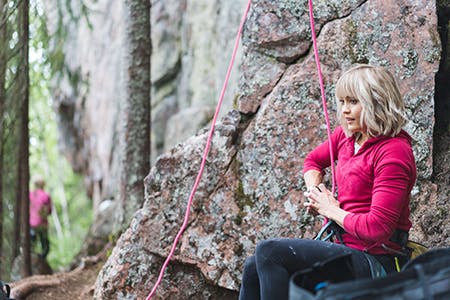
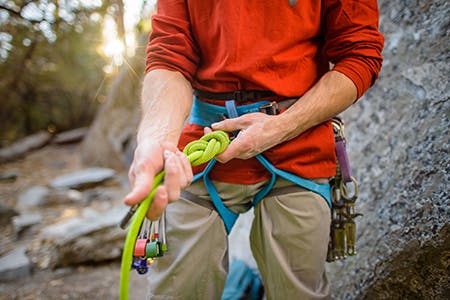
In this Gear Myths, we decided to explore KP’s question of how climbers tie in—specifically how they thread the rope through the tie-in points of their harness. Is there a “standard” way? Should there be? And more importantly: is one method better than the other?
First, we wanted to confirm KP’s suspicions and get a pulse for how the majority of climbers are tying in.
On our list of climbers to ask was the female U.S. National Champion in both lead and speed climbing: BD Athlete Claire Buhrfeind.
We chatted with Claire about her tie-in technique, and interestingly, she’s never really thought about how she ties in. Of course, she knows her knot. That’s a given. But as far as threading the rope through her harness, that bit of info is on auto-pilot for her.
“I've actually never thought about this, but I tie in the same way every time,” she explained. “I always thread the rope through the bottom. I think it's just ingrained in my routine. When I learned to tie a bowline, I copied exactly what my coach showed me, and I've never tried to do it any other way. At least I know I'm not making any mistakes!”
OK, so the best female lead climber in the U.S. goes bottoms-up, every time. And, just a side-note, she ties in with a bowline.
But what about the best male lead climber in America?
U.S. National Champion and BD Athlete Sean Bailey was quick and to the point:
“I come up through the bottom,” said Bailey. “No reason why, it's just how I was taught. It would feel weird to do it any other way.”
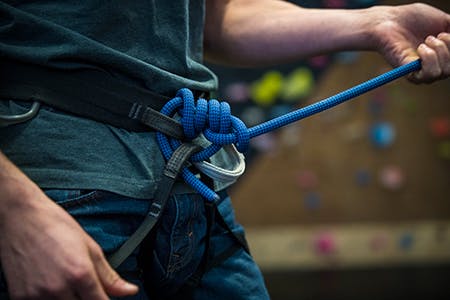
With both U.S. National Champions going bottoms-up, we began to wonder if what KP had seen was a fluke. Or maybe he didn’t even see it at all? Was he crazy?
The famed Basque climber, BD Athlete Patxi Usobiaga, didn’t help KP’s case when he said he always threads the rope “bottoms-up.” Patxi made history when he became the first person to onsight 5.14c, so it’s safe to say he knows a thing or two about tying in.
Patxi, who now coaches none-other than Adam Ondra, was methodical in his explanation for tying in “bottoms-up.”
“When you tie in from the bottom, you have all the figure-eight knot in front of you,” he said.
Patxi’s point is that when tying in with a figure-eight, if you thread from the bottom up, the eight is easy to check visually and trace properly.
But what about Ondra? We’ve heard from his coach—a staunch “bottoms-up” guy. How does the pupil-turned best climber in the world tie in???
KP caught up with Ondra during the Innsbruck World Champs, and asked him the fateful question: bottoms-up or top-down?
“Depends on which knot,” he replied, eyes twinkling as if he’d known all along he would shatter KP’s fragile reality.
“With the bowline I go top down,” explained Ondra. “With the eight I go bottoms-up.”
Ah ha! There it was, shining like a golden #2 stuck in an Indian Creek splitter: Ondra ties in both ways.
“But …” he added, “I really hate the eight, so I never use it.”
Fair enough. We’re not going to dive into the bowline vs. eight debate here. But to be honest, we were relieved to find that KP wasn’t crazy after all.

“When you tie in from the bottom up, you can easily see while threading the rope through the leg loop tie-in point, and the waist tie-in point,” explained KP. “Visually it’s easy to see that you’ve threaded both. If you tie in top-down, then your hand is in the way and it’s hard to see if you’re threading the rope through both tie-in points correctly ... especially the lower (or leg loop) tie-in point.”
But how crucial is it to have the rope threaded through both tie-in points, we wondered? Would this also build a case for the bottoms-up method of tying in?
“In lab testing, it is shown that the leg loops take 70 to 80 percent of the load in a fall,” said KP. “So, if you were to only hit one tie-in point, the leg loop is the one that takes the majority of the load.”
We can see his point. If you were to start by threading the rope through the bottom loop first, you’re more likely to at least get the rope through that tie-in point, which statistically takes most of the load in a fall.
However, there’s a catch, pun intended, to that argument.
“If you only tied into the leg loop tie-in point, then yes, it takes most of the load, but you’re also way more likely to flip upside down and potentially fall out of your harness ... so perhaps making sure you tie in to the waist belt tie in point is ‘safer.’ After all, back in the day folks tied into a swami at the waist and never had much issue.”
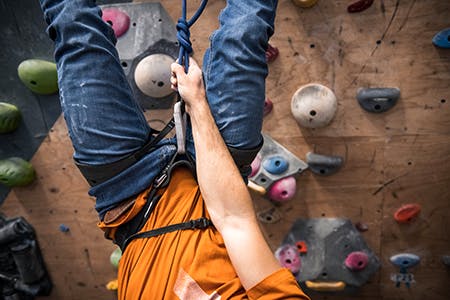
When it’s all said and done, we settled on this fact: tying in, whether you’re threading bottoms-up, or top-down, is the single most important part of your climbing day. There’s no room for distractions. So whatever method you’re comfortable with, and are going to nail 100% every time, then that’s the “safest” method.
“I have a friend who walks to the base of the wall and puts her head on the wall while she’s tying in,” added KP. “That signifies to others to leave her alone and not talk to her because she’s doing something important!”
The bottom line according to KP?
“You always want to ensure you tie in to both the leg loop AND waist belt tie-in points.”
So, there you have it. Both methods suffice, as long as you’re hitting both tie-in points.
However, it’s worth noting that the style of knot also seems to influence whether you’re a “bottoms-up” or “top-down” kind of climber. Like Ondra, all climbers we interviewed preferred tying in “bottoms-up” while using a figure eight. And we found climbers using both methods with the bowline.
What we didn’t find was a climber who prefers the top-down method while tying in with a figure eight.
Are you our unicorn?
Let us know your method of choice in the comments.


Follow BD Athlete Yannick Glatthard deep into the Swiss Alps as he shares his home...
Follow BD Athlete Yannick Glatthard deep into the Swiss Alps as he shares his home mountains with close friends.

Follow Dorian Densmore and Mya Akins for another winter season of steep Alaskan spines, backyard...
Follow Dorian Densmore and Mya Akins for another winter season of steep Alaskan spines, backyard couloirs, and deep adventures in the mountains.


Watch BD Athlete Alex Honnold throw down on some hard trad high above Tahoe.



In 2012, filmmaker and photographer Ben Ditto, and professional climber Mason Earle equipped an immaculate...
In 2012, filmmaker and photographer Ben Ditto, and professional climber Mason Earle equipped an immaculate line in Tuolumne’s high country. But their attempts to free the route were thwarted when Mason’s life changed drastically. With the help of Connor Herson, Ditto and Mason found a way to keep the dream alive.
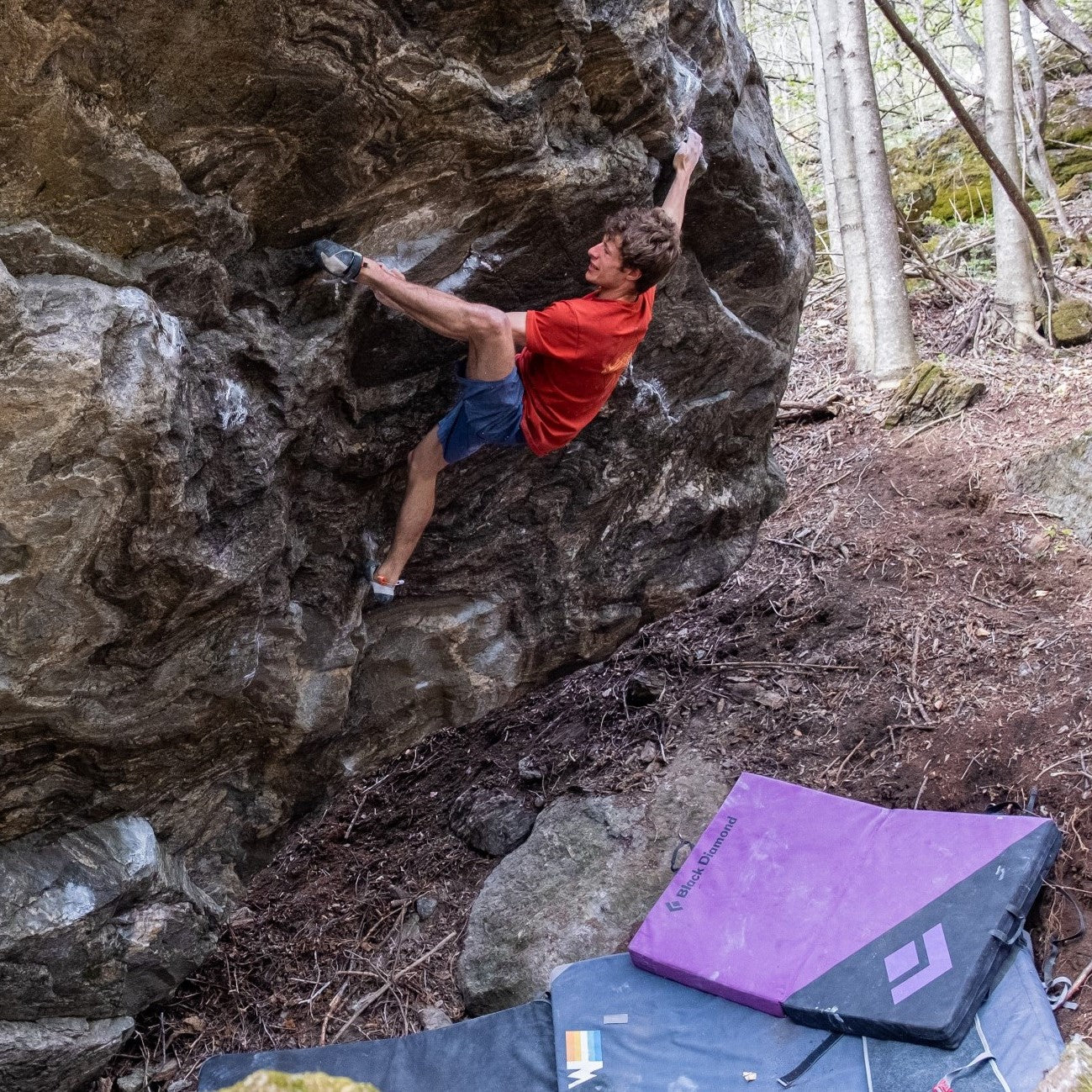

Watch and learn as our Field Test Coordinator runs you through a step by step...
Watch and learn as our Field Test Coordinator runs you through a step by step process of trimming and setting up any STS-style Black Diamond skin.


Every climber has a few lines they dream about. Whether inspired or haunted—or sometimes both—these...
Every climber has a few lines they dream about. Whether inspired or haunted—or sometimes both—these lines can push us beyond what we thought we were capable of, in turn teaching us who we really are. BD Ambassador Ethan Salvo recently restructured his entire life to focus on two climbs that pulled him into the void with only one way out … getting to the top. This is his story of sending Dreamcatcher and becoming the first Canadian to climb V16 in the same week.

BD Athlete Connor Herson spent as many weekends as possible in the Valley this spring...
BD Athlete Connor Herson spent as many weekends as possible in the Valley this spring during a grueling quarter at Stanford. The objective? Ground up, in-a-day ascents.

